Rules
Rules define code quality standards and patterns that Artemis checks across your codebase. Each rule represents a guideline, best practice, or constraint designed to improve consistency, security, and maintainability within your project.
Every rule in Artemis includes the following attributes:
-
Rule Name A descriptive title (e.g., Error and Exception Handling, Input Validation).
-
Description Explains the purpose of the rule, what it enforces, and why it matters. Example: Ensures all user inputs are validated and sanitized to prevent vulnerabilities and maintain data integrity.
-
Importance Level Defines how critical the rule is for your project:
- Mandatory → Must always be followed.
- Essential → Strongly recommended for correctness and stability.
- Preferred → Encouraged for maintainability and best practices.
- Advisory → Optional recommendation.
-
Enabled / Disabled You can toggle each rule on or off based on project needs.
Creating a Rule
Step 1: Access rule panel
Navigate to Scan → Rules
Step 2: Choose or Add a Rule.
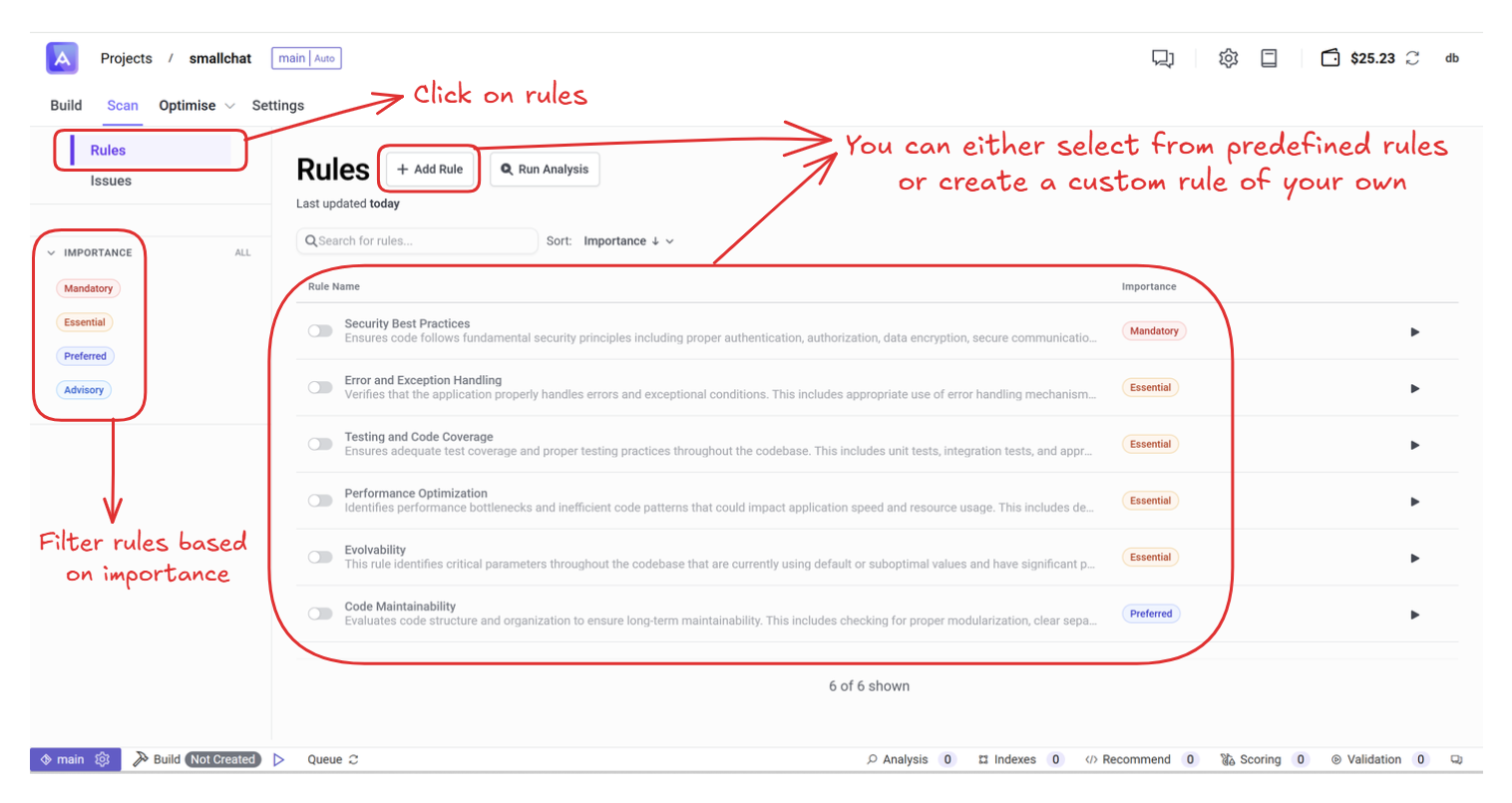
Click Add Rule to open the creation form. Provide:
- Rule Name
- Description
- Importance Level
- Enable / Disable toggle
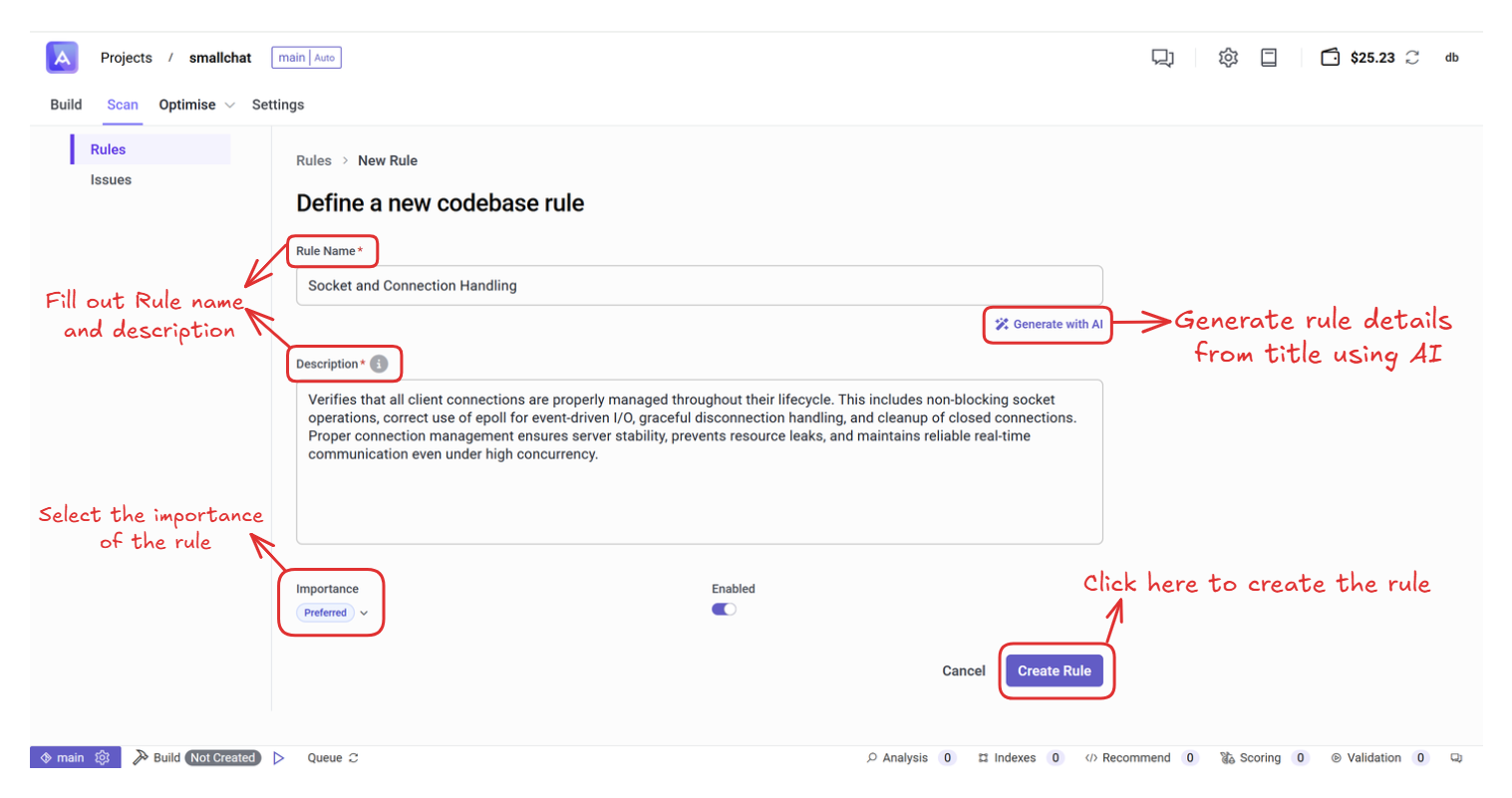
Step 3: Run Analysis
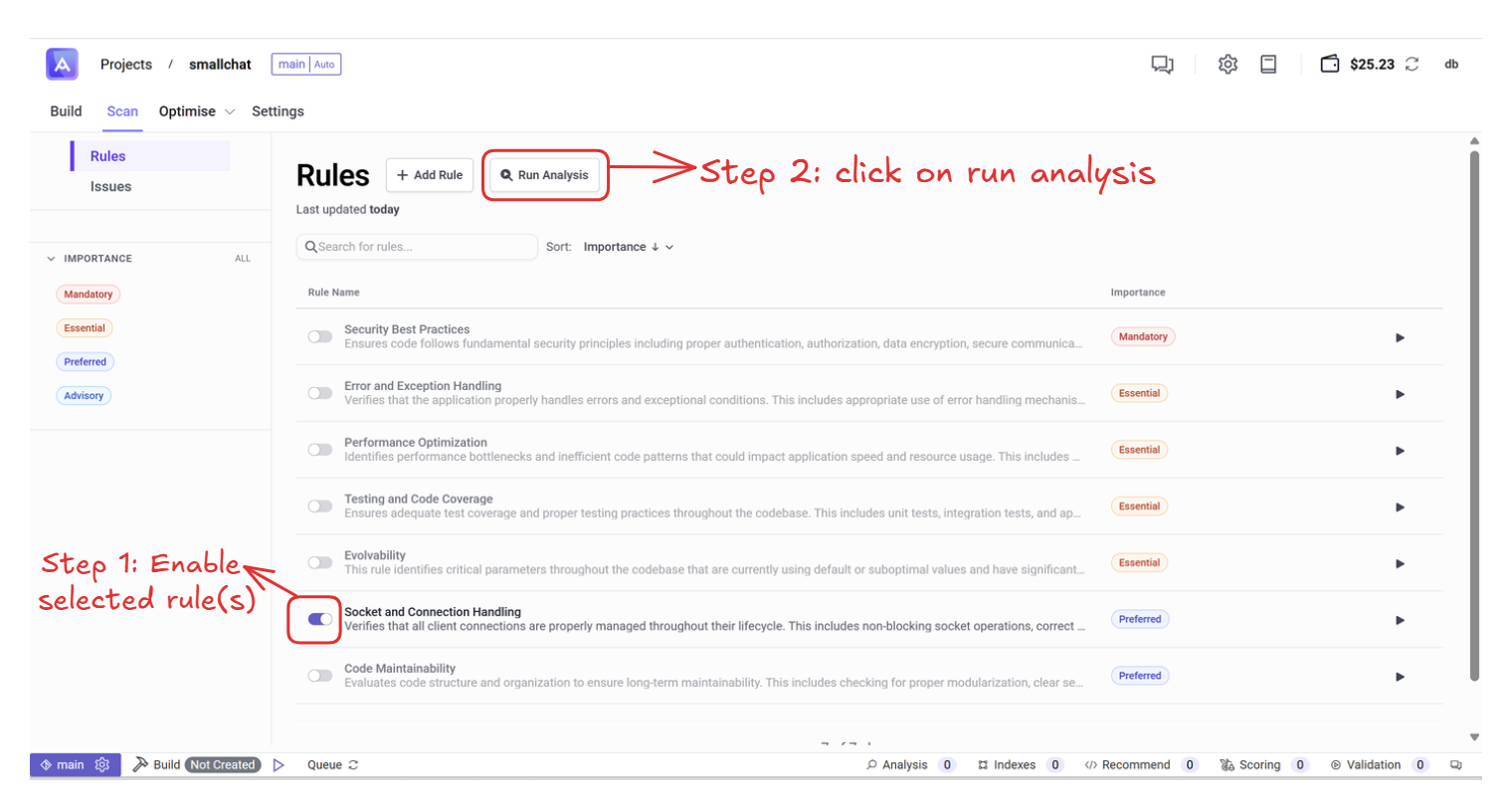
Step 4: Configure and Start the Analysis
After clicking Run Analysis, set up your configuration and start the scan.
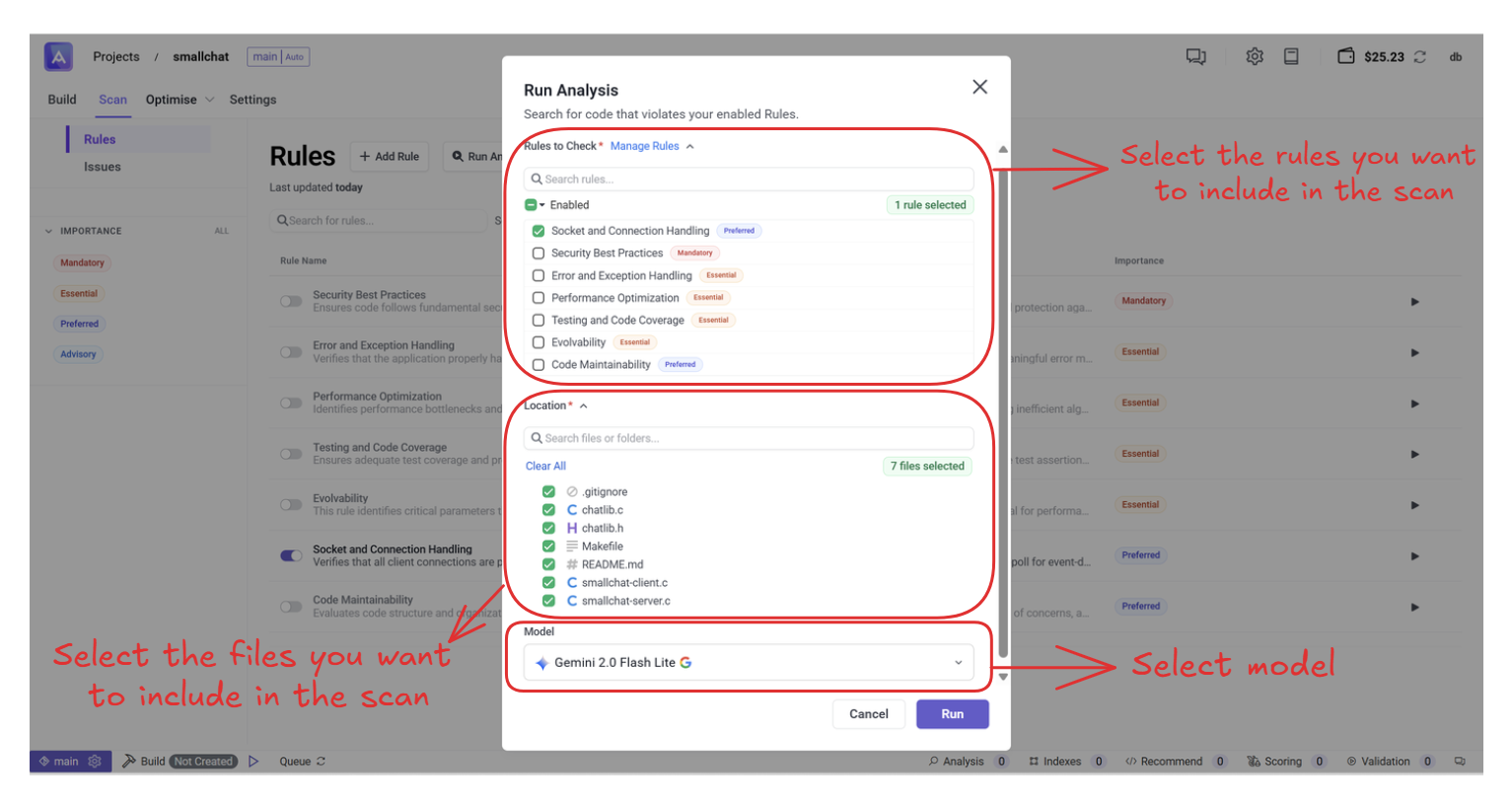
Step 5: View Issues
Once the analysis is complete, you'll see the detected issues listed in the Issues panel.
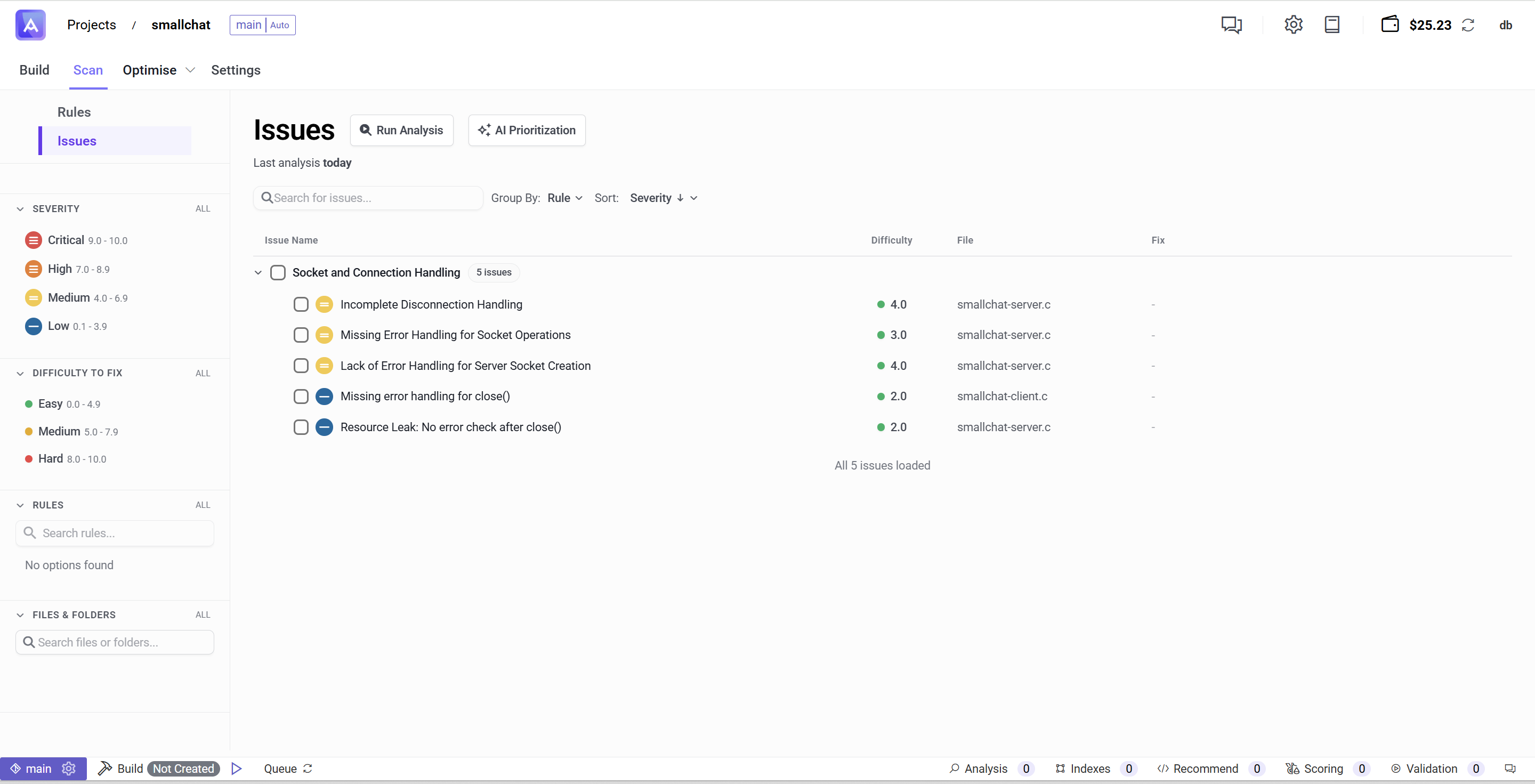
Example Rule: Error and Exception Handling
-
Importance: Essential
-
Description: Ensures that the application properly handles errors and exceptional conditions.
-
Why it matters:
- Prevents unexpected crashes
- Ensures meaningful error logs
- Improves stability and user experience
When this rule is enabled, Artemis scans the codebase for improper error-handling patterns.
By defining rules, you can:
- Enforce consistent coding standards across teams
- Detect risky or non-compliant patterns early
- Provide actionable feedback to developers
- Improve reliability, security, and maintainability
Next Step
Proceed to analyze and fix issues.